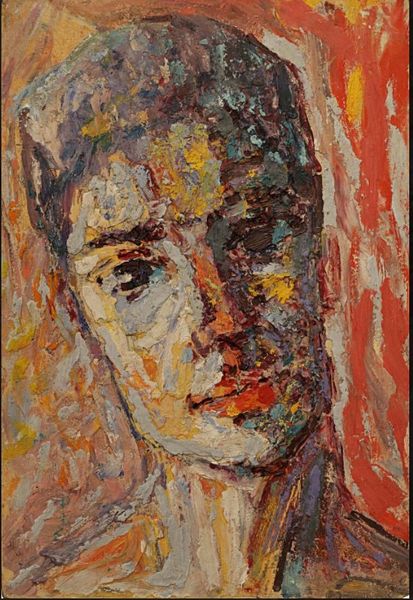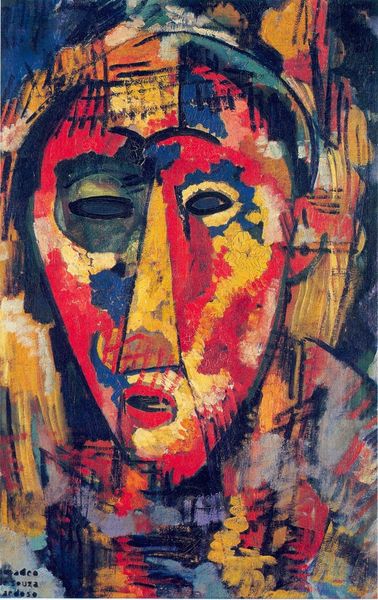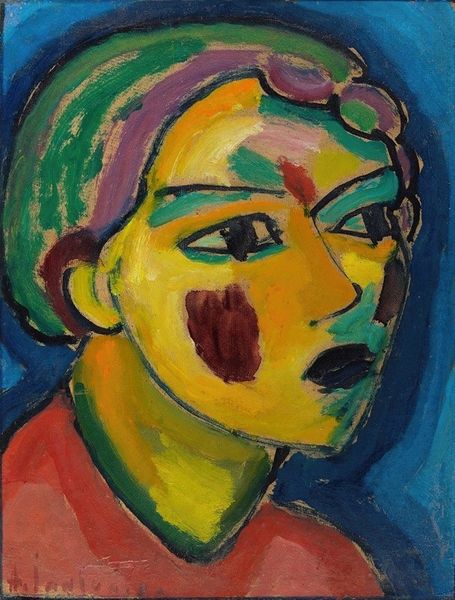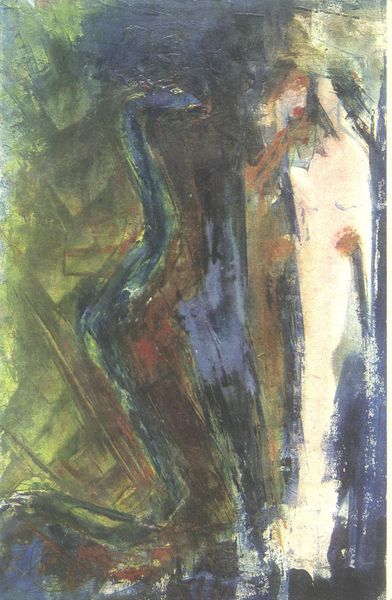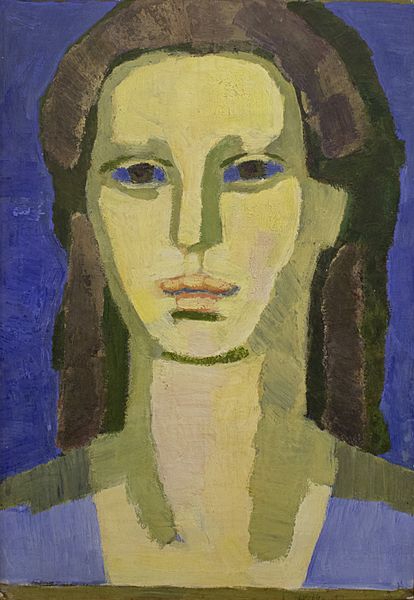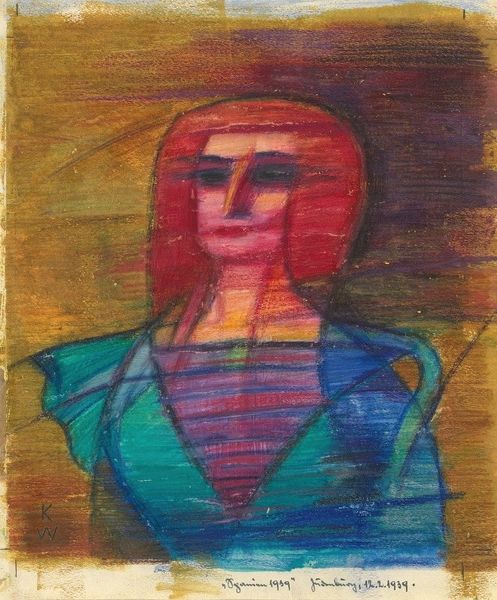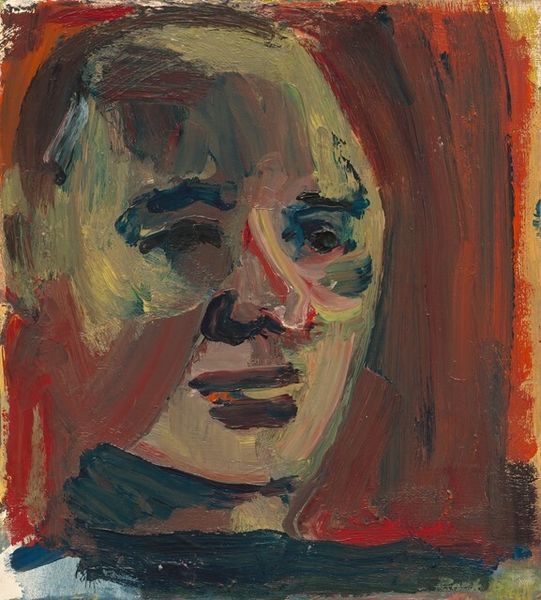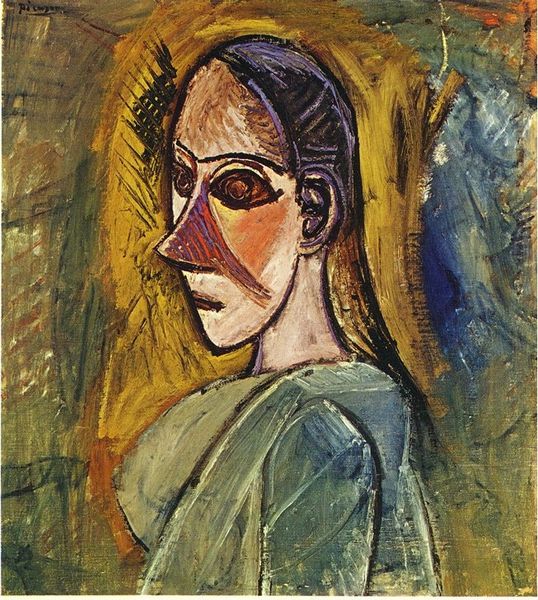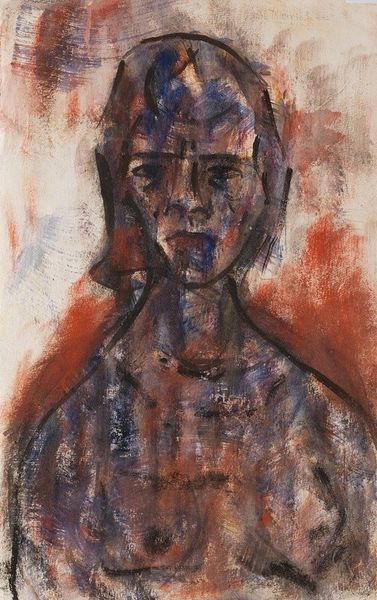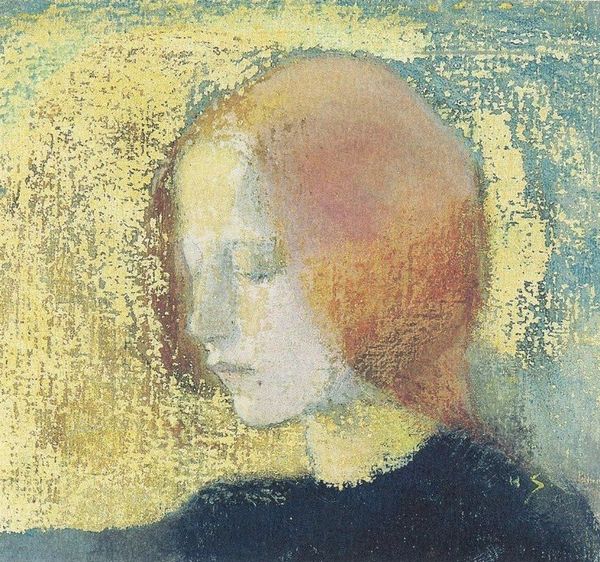
paper, watercolor
#
portrait
#
self-portrait
#
german-expressionism
#
figuration
#
paper
#
oil painting
#
watercolor
#
famous-people
#
male-portraits
#
expressionism
#
modernism
Copyright: Public domain US
Curator: Here we have Emil Nolde's "Self-Portrait," painted in 1912 using watercolor on paper. Editor: It’s incredibly striking! The colours feel almost violently expressive; a face divided by anxiety and revelation. A fever dream made real. Curator: I agree, the vibrancy practically leaps off the paper! Nolde, aligned with the Die Brücke expressionist movement, aimed to convey intense emotion through distorted forms and clashing colours, breaking from academic traditions. Think about how readily available watercolor was at the time: light, portable, allowing artists to document on the go! Editor: Interesting that you mention materials, given the man staring back at us seems almost alien, like the artist is using color and form to externalize some inner torment, I'm curious what dictated such a strange color palette; it seems a bit unsettling in execution, maybe intended that way? What might this reveal about the artist's self-perception or his societal context at that time? Curator: I think his approach involved exploring inner psychological states more than simple reproduction of reality. Expressionism rejected mere optical impressions, favouring subjective emotional experiences instead. These unconventional color choices might represent Nolde's conflicted emotions about his art or his place in society. You also must account for societal influence; he made this painting amid rising cultural anxieties and looming global conflict! Editor: But did he prepare the watercolor paper in a standard way, or was the material manipulated beforehand to allow such free color diffusion? The labor invested in the creation has to speak somehow, even if subconsciously, to larger production chains, to consumption—perhaps to colonial structures as they supported artists making ‘progressive’ aesthetic choices? Curator: Your perspective is quite interesting; you relate material manipulation directly to societal critique! Perhaps Nolde would see it as purely aesthetic. Regardless, "Self-Portrait" gives us much to think about regarding self-representation and how it is related to external conflicts and materiality. Editor: Well, thinking through these contradictions gives it greater significance in my eyes.
Comments
No comments
Be the first to comment and join the conversation on the ultimate creative platform.
